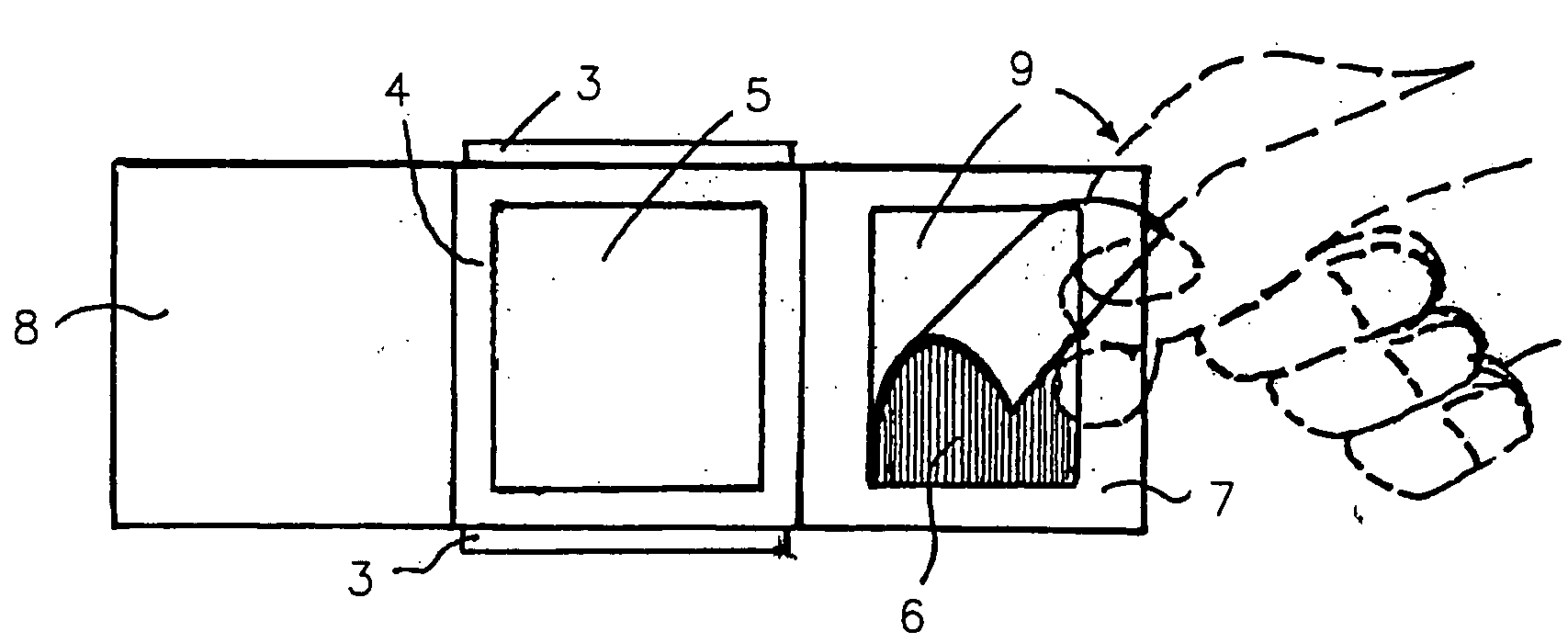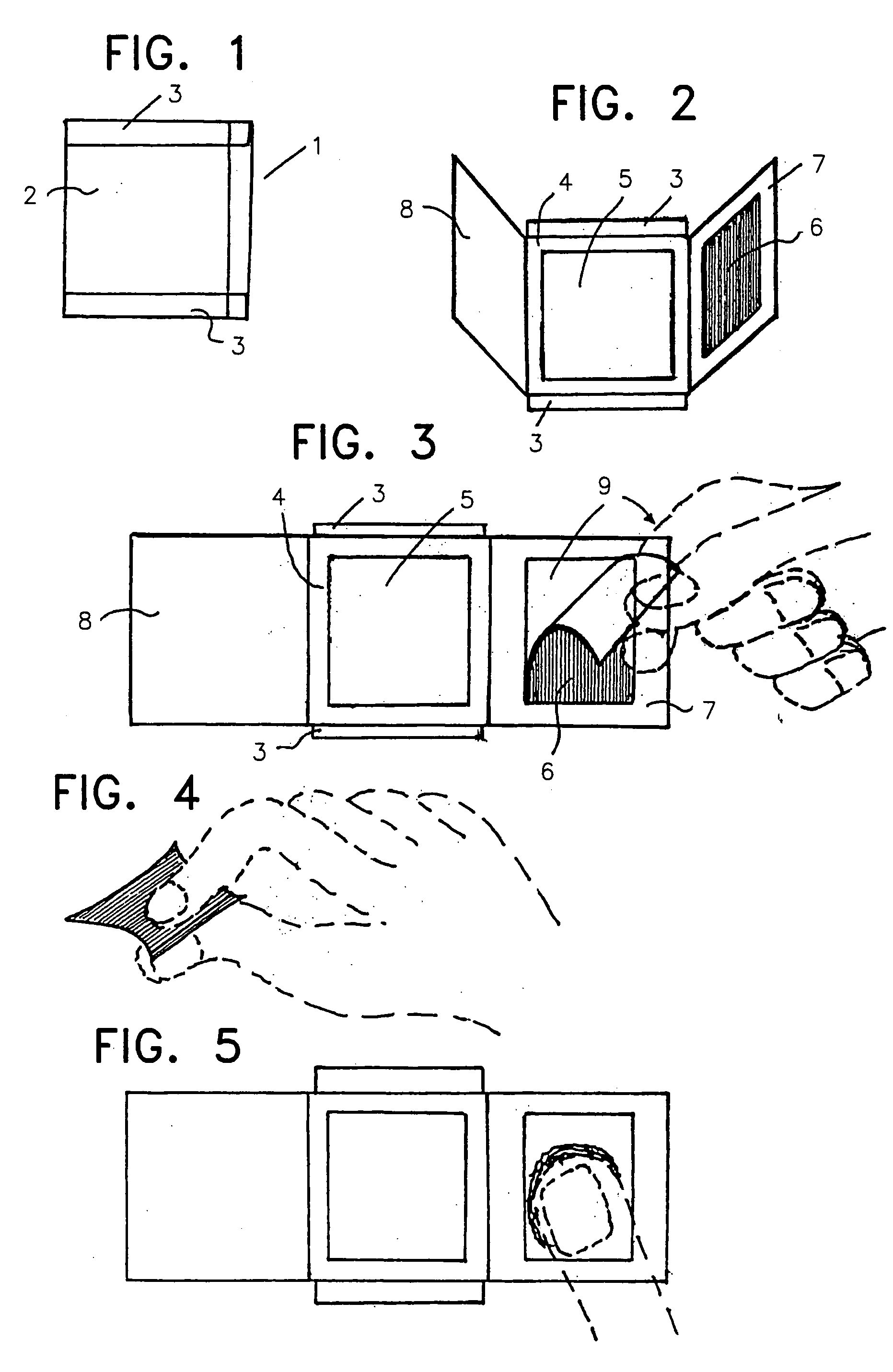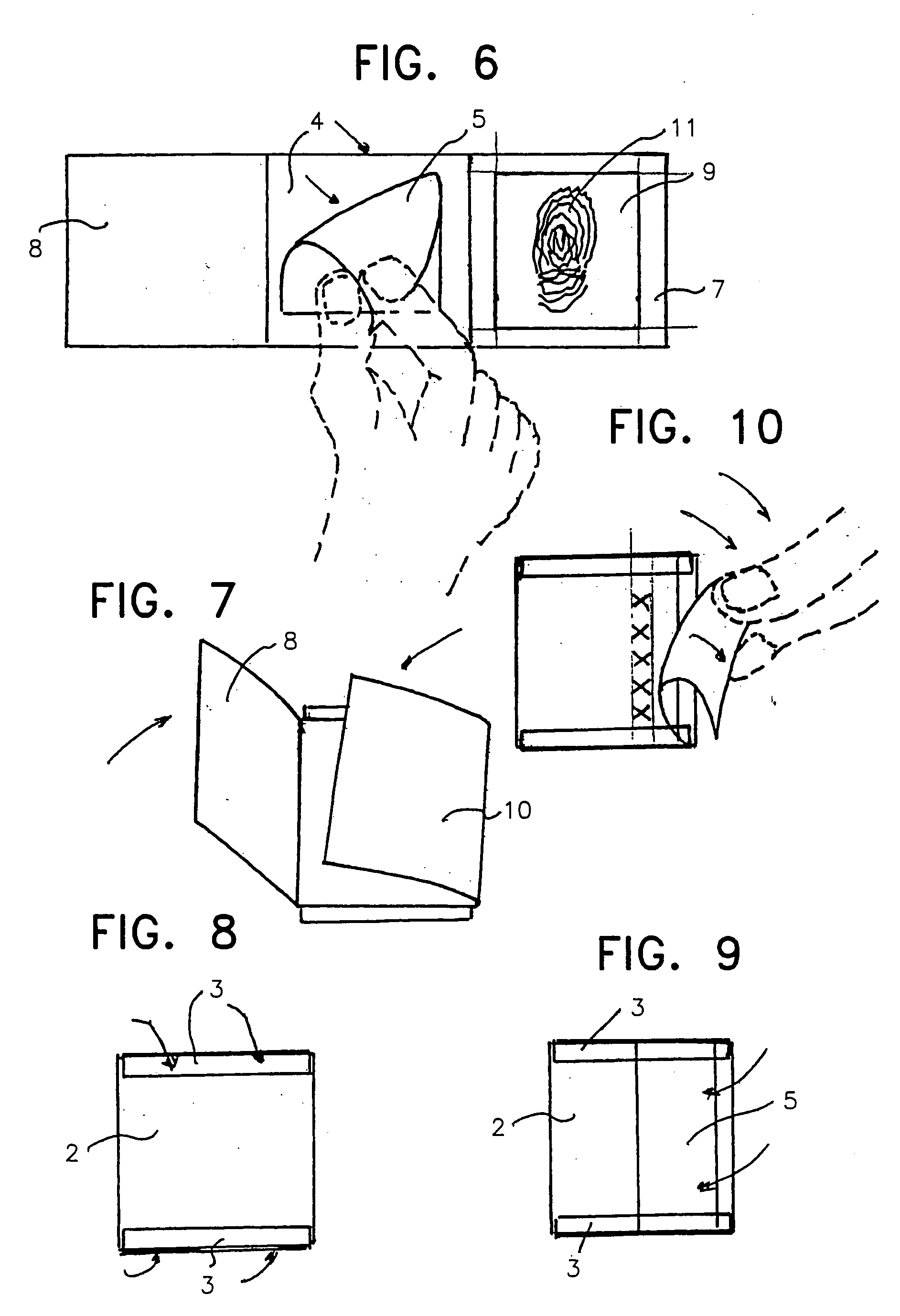Non-intrusive portable safety seal used to obtain people's dna and genetic patterns through fingerprinting
a portable safety seal and fingerprinting technology, applied in the field of non-intrusive portable safety seals, can solve the problems of high risk of inappropriate use, danger of contamination of the person manipulating, etc., and achieve the effects of non-intrusive, safe method, and convenient us
- Summary
- Abstract
- Description
- Claims
- Application Information
AI Technical Summary
Benefits of technology
Problems solved by technology
Method used
Image
Examples
Embodiment Construction
[0039]When the user needs to identify a person through the seal proposed, the steps are as follows.
[0040]The seal is taken and the two safety flaps that close the top and bottom edges are detached. The main body of the triptych-configuration is opened and the graphite or granulated adhesive-covered sheet on one of the internal sides of the triptych is removed from the safety seal (FIG. 3).
[0041]Then, the finger of a subject from which the visible or latent printing needs to be obtained is selected The print for the subject's fingerprint and DNA is visible if a graphite sheet is used or latent if a granulated sheet is used). Generally, the thumb is selected, although it could be any other finger. The selected finger is sufficiently rubbed on the detached graphite or granulated sheet (FIG. 4), such that the graphite of the graphite sheet is transferred to the selected finger, impregnating and covering most of the surface of the finger where the fingerprint is to be obtained.
[0042]Once...
PUM
 Login to View More
Login to View More Abstract
Description
Claims
Application Information
 Login to View More
Login to View More - R&D
- Intellectual Property
- Life Sciences
- Materials
- Tech Scout
- Unparalleled Data Quality
- Higher Quality Content
- 60% Fewer Hallucinations
Browse by: Latest US Patents, China's latest patents, Technical Efficacy Thesaurus, Application Domain, Technology Topic, Popular Technical Reports.
© 2025 PatSnap. All rights reserved.Legal|Privacy policy|Modern Slavery Act Transparency Statement|Sitemap|About US| Contact US: help@patsnap.com



